People keep asking me how to improve aim in FPS games, like there’s a magic button hidden under the keyboard. In my experience, there isn’t. It’s a stack of small things: aim training, mouse sensitivity, crosshair placement, DPI, recoil control, tracking, flick shots, and yes, boring practice. I’ve spent a decade tweaking settings, burning through mouse pads, and pretending my whiffs were “desync.” So I’ll share what actually helped me go from potato to consistent headshots. No guru talk. No hype. Just stuff that works.
Why your aim feels cursed (and how I fixed mine)
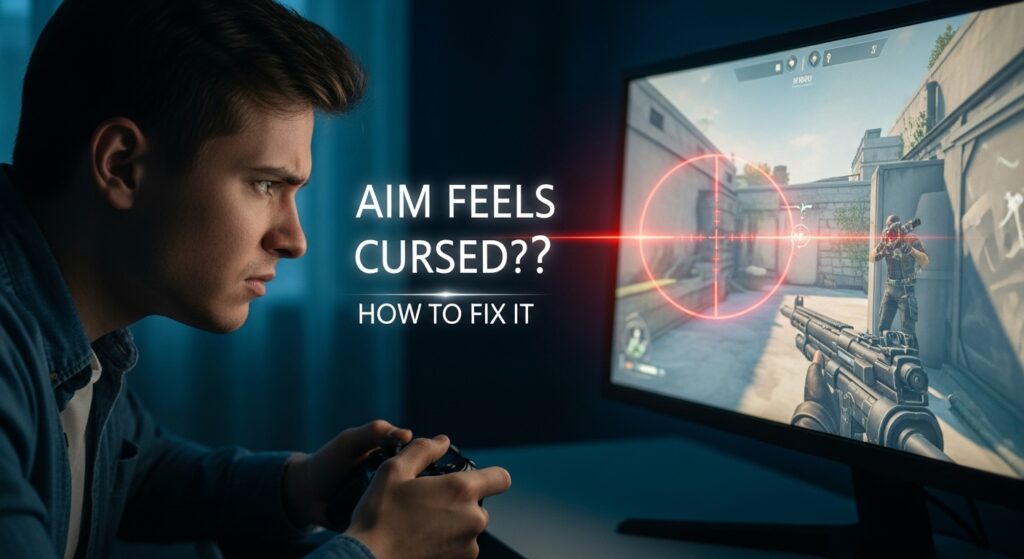
I used to think my aim was bad because I was “inconsistent.” That was a lie I told myself. The truth? My settings were a mess. My posture was bad. My warm-up was a joke. And my ego refused to re-learn basics. Once I swallowed that, things got better fast.
I’ve always found that good aim is three parts: the gear, the settings, and the brain-hand loop. Get any of those wrong, and you’re trying to thread a needle on a rollercoaster.
Gear that doesn’t sabotage you
You don’t need a $200 mouse. But bad gear can waste months. Here’s what matters:
- Mouse: Pick a shape that fits your hand. Weight under ~80g is nice. No built-in acceleration.
- Mouse pad: Big and consistent. Cloth pads are forgiving. Hard pads are fast but weird on wrist.
- Monitor: 144 Hz or higher. 60 Hz players can aim, sure, but it’s like sprinting in flip-flops.
- Desk and chair: Your arm needs room. If your mouse hits your keyboard every fight, that’s on you.
If you want a nerdy reason for lower sens and bigger movements, look up Fitts’s law. Short version: bigger motions can be more accurate. Also, reduce system delays. Read about input lag and try not to cry.
Settings that actually help you click heads
Settings won’t make you a god, but they will stop you from fighting your hands.
DPI, sensitivity, and eDPI
What I think is simple: pick one sensitivity and don’t change it for 30 days. Let your brain adapt. I run 800 DPI because it’s a nice middle ground. In-game I sit around 0.5 to 0.7 depending on the title. That gives me a steady eDPI that lets me track and flick without panic.
“Table”: Common eDPI ranges (plain and useful)
- Low sens (arm aim): eDPI 800–1200 — great for tracking and micro-corrections.
- Mid sens (mixed aim): eDPI 1200–2000 — good balance for most players.
- High sens (wrist aim): eDPI 2000–3500 — fast turns, but hard to control for long fights.
I’ve tried the streamer flavor-of-the-week settings. Every time I swapped, my aim got worse. Shocking. Don’t do that. Pick a sens and commit. Your muscles will thank you.
ADS and scope multipliers
Keep ADS sensitivity consistent with hipfire. Not always possible across games, but try to match “cm/360” across scopes if you can. I like 1.0 multipliers, or 0% monitor match in games that support it. It makes transitions feel smooth.
Frame rate, V-Sync, and raw input
- Turn on raw input in-game if available.
- Disable mouse acceleration in your OS.
- Turn off V-Sync. It adds delay. G-Sync/FreeSync can be fine if configured well.
- Cap your FPS to keep frame times stable. Stability feels better than spikes.
And yes, high polling rate helps. 1000 Hz is standard now. More than that? Nice to have, not a must.
Crosshair placement: free aim assist (the legal kind)
Most misses happen before you shoot. Your crosshair is chilling at belly button level while the enemy’s head is up top, like always. Keep your crosshair at head level as you move. Sounds basic. Is basic. Also wins fights.
- Pre-aim corners. Imagine a head peeking. Place your crosshair there before you swing.
- Stop crouch spamming unless it’s part of your pattern. Random crouching ruins tracking.
- Counter-strafe in games where it matters. Hit the opposite key to stop faster and shoot straight.
I used to swing wide and “react.” Translation: I had no plan. Now I pre-aim angles and I’m ready to click. Big difference.
Flicks vs tracking vs micro-adjustments
These are different skills. You need all three.
Flick shots
Quick jump from point A to point B. High burst control. Feels cool. Easy to miss if your sens is wild.
Tracking
Staying on a moving target. Strong arm control. Great in games with high time-to-kill or fast movement.
Micro-corrections
Tiny nudges to lock the head. That last 1% that turns body shots into headshots.
“Table”: Drills I use (and why)
- 1–2 minutes: Line trace warm-up. Slow horizontal and vertical sweeps.
- 3–5 minutes: Static click on small targets. Build precision, not speed.
- 3–5 minutes: Microflicks between two tiny dots. Left-right-left. Control, not panic.
- 5 minutes: Tracking a fast target that changes direction. Keep smooth. Don’t chase with jitter.
- 3 minutes: Burst click on medium targets. Practice shot rhythm and recoil reset.
You can do these in Aim Lab, Kovaak’s, or even a game’s training range. I prefer aim trainers for controlled reps, then I jump into deathmatch to apply it when people shoot back.
Warm-up that doesn’t waste your time
I time my warm-up. I used to “warm up” for 45 minutes. That was procrastination in a hoodie. Now I run 15–25 minutes, max:
- 5 minutes: slow tracking and micro-adjustments.
- 5–10 minutes: static click + microflicks.
- 5–10 minutes: deathmatch with intention. Focus on crosshair at head level.
If I’m off, I stop and stretch. Sometimes you’re just cooked. No shame in taking a break.
My “don’t get injured” checklist
- Big mousepad, low to mid sens. Use the arm, not just the wrist.
- Neutral wrist. Elbow on the desk edge or pad edge, not dangling in space.
- Take 60-second breaks every 30 minutes. Shake out the hand.
- Hydrate. Your brain needs water. So do your tendons.
Recoil control and burst timing
In my experience, people think recoil is random. It’s not. Learn the first 10 bullets of your main gun and you’ll land more shots instantly.
- Burst fire at range. Tap, reset, tap. Don’t hold mouse1 and pray.
- Practice short sprays on a wall. Then transfer to a target.
- Use single-fire or semi-auto for headshots at long range. Feels slow. Works fast.
Stop changing your settings every week
One of my worst habits. I’d see a pro’s config, copy it, then spend three days missing. Stability beats experiments. If you must tweak, do it on a “settings day,” not before ranked. And write it down.
My simple settings log “table”
- Date: 2025-08-11
- DPI: 800
- In-game sens: 0.6
- eDPI: 480
- FOV: 103
- Notes: feels steady, tracking improved, micro a bit slow
Update once per week at most. If your aim is tanking, go back to what worked and stick there.
Match practice that builds aim, not bad habits
Aim trainers are great, but you still need game sense. I do this:
- 10 minutes: aim trainer drills with intent.
- 15–20 minutes: deathmatch or unranked. Focus on crosshair placement and movement.
- Ranked: play, but keep one focus. Maybe it’s pre-aim. Maybe it’s counter-strafing. One thing at a time.
After a session, I review one or two fights. Not the whole match. I look for the moment I missed, and why. Crosshair too low? Sens too fast for micro? Bad swing? Fix one thing. Move on.
Movement, peeker’s advantage, and not getting farmed
Peek like you mean it. If you creep into angles, the other guy gets the first shot. If you swing wide with no crosshair prep, you whiff. Pick an angle. Pre-aim. Strafe out. Counter-strafe. Shoot one or two well-placed shots. Tuck back in.
- Don’t jiggle for no reason. Jiggle with a plan (to bait a shot or check info).
- Use headshot angles. Lower your model when needed, but don’t crouch spam randomly.
- Hold angles when you have the advantage. Force them into your crosshair line.
Console vs PC (controller people, I see you)
On controller, deadzones and curves matter as much as DPI does on mouse. I’m not anti-aim-assist. I’m anti-weird settings that fight you.
Controller “table”: simple starting points
- Deadzone: as low as you can go without stick drift.
- Response curve: linear if you want a 1:1 feel, exponential if you need more micro help.
- ADS multiplier: keep close to hipfire equivalent for muscle memory.
- Turn cap: learn it. Don’t slam the stick and waste movement.
Aim routines that actually stuck for me
Here’s my simple, boring, effective routine. Boring is good. Boring means repeatable.
Daily (25–40 minutes before ranked)
- 5 minutes: slow line tracing (arm and wrist both).
- 5 minutes: small static dots, center and click.
- 5 minutes: microflicks between two targets.
- 5–10 minutes: reactive tracking (target changes speed and direction).
- 10–15 minutes: deathmatch with one focus (crosshair at head level).
Twice a week
- 15 minutes: recoil patterns on my main guns.
- 10 minutes: angle clearing on a custom map. Pre-aim practice.
Once a week
- Settings check: confirm nothing drifted. No “accidental” mouse software updates.
- Review clips: 5 fights where I missed. Note the reason. Pick one fix for next week.
When to learn from others (and when to ignore them)
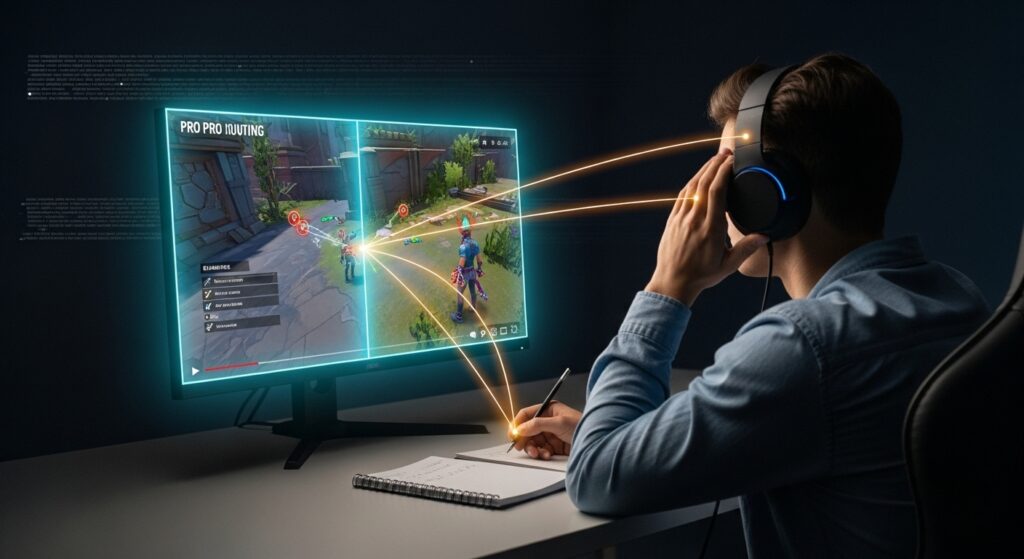
Watching pros helps. Copying their exact sensitivity doesn’t. Your desk, pad, arm length, posture, and muscle memory are different. What I do is steal ideas, not numbers. For a solid, general skill primer, I’ve pointed friends to essential tips to master FPS games. Use it to spot gaps, then tailor to your setup.
Mindset: the unsexy part that decides everything
I don’t grind when I’m tilted. My aim falls apart and I build bad habits. I set a three-strike rule: three bad games, I stop. Go outside. Touch grass, or at least a fridge door.
- Focus on the process, not K/D. Process builds K/D, not the other way around.
- Keep your sessions short and sharp. Quality reps beat marathons.
- Sleep. Yes, I know. But sleep is free aim boost.
Little technical hacks that gave me free accuracy
- Lower my chair 1–2 cm so my forearm sits flat.
- Place the monitor closer. Less head movement, more eye movement.
- Use the same crosshair color across games. My brain locks in faster.
- Disable useless overlays that add delay.
- Set Windows pointer speed to 6/11. No weird scaling.
Common mistakes I keep seeing (and used to do)
- High sensitivity to “turn faster,” then missing easy shots.
- Changing settings daily and calling it “tuning.” It’s not tuning. It’s panic.
- Warming up only in aim trainers, never in-game.
- Crosshair at the floor. Then wonder why heads don’t get hit.
- Blaming ping for every potato spray. Sometimes it is ping. Usually it’s you. Or me. Whatever.
Simple science without the headache
I like simple rules. If your target is small or far, slow down your hand. If your enemy is flying around like a caffeinated squirrel, trust arm aim and track smooth. Fitts’s law says bigger motions can be more accurate. You don’t need the formula to feel that.
Also, if your game feels “sticky,” check for input lag. Frame rate caps, bad cables, weird monitor modes—lots of tiny thieves. Again: read up on input lag when you have the patience, then kill the biggest offenders first.
My first dumb month vs my first good month
“Table”: what changed
- Dumb month: new sens every two days. Good month: one sens for 30 days.
- Dumb month: 60 Hz monitor. Good month: 165 Hz. Could finally track.
- Dumb month: no warm-up. Good month: 20-minute routine.
- Dumb month: chasing pros’ settings. Good month: tuning for my arm and desk.
- Dumb month: panic sprays. Good month: burst fire, reset, head level.
My aim didn’t become magic. It just stopped getting in my way. That’s enough.
If you only remember five things
- Keep your crosshair at head level. Always.
- Pick a sens and keep it for a month. Build muscle memory.
- Warm up 15–25 minutes with intent. Not random.
- Chase stability over “perfect.” Stable wins.
- Review a couple fights, fix one thing, repeat.
Extra “tables” because everyone loves a cheat sheet
“Table”: Sens conversion sanity
- Switching DPI from 800 to 1600? Halve in-game sens to keep eDPI the same.
- Changing FOV? Expect your aim to feel off for a week. Don’t change sens yet.
- New mouse shape? Give it 7–10 days before judging.
“Table”: Quick settings checklist before ranked
- Mouse acceleration: off (OS and game).
- Raw input: on.
- Polling rate: 1000 Hz.
- Frame cap: set for stable frame times.
- Audio: footstep presets, not bass-boosted chaos.
- Crosshair: simple, visible color. No outlines thicker than your targets.
How I’d fix your aim in a week (if you let me)
- Day 1: Lock your sens. Write it down. No changes for seven days.
- Day 2: Learn head levels on two maps. Pre-aim each angle while walking.
- Day 3: Aim trainer microflicks and tracking, then deathmatch head-only.
- Day 4: Recoil practice. Ten minutes, two guns. Controlled bursts.
- Day 5: Demo review of five fights. Find one pattern.
- Day 6: Same drills, focus on crosshair discipline.
- Day 7: Light day. Short warm-up. Only play while fresh. Stop early if you fade.
Is it thrilling? No. Does it work? Yes. It’s the quiet stuff that stacks.
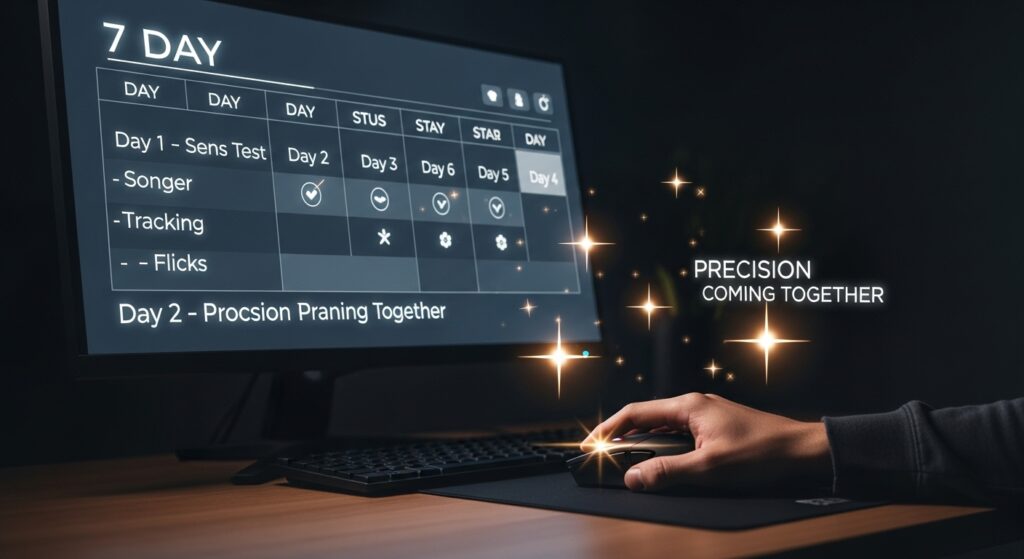
Quick note before someone asks
I’m not saying my way is the only way. But I’ve tested enough bad ideas to smell them from a mile away. Most of this is obvious once you try it for two weeks straight. The trick is doing it. And not sabotaging yourself by swapping settings mid-tilt. If you came here looking for a secret trick for how to improve aim in FPS games, sorry. The secret is steady reps and smart settings. Which is the least secret secret in gaming.
Two more tiny tweaks that did way too much
- I put my keyboard at a slight angle so I could move the mouse pad closer. More arm room, fewer weird wrist bends.
- I turned off motion blur and bloom everywhere. Might be pretty. Not helpful when aiming.
That’s pretty much it. Keep it simple, keep it stable, keep your crosshair up. If you do want a structured list of fundamentals, this breakdown of essential tips to master FPS games is solid. Use it to spot holes, not as a holy book. And if someone tells you to change sens every match to stay “sharp,” smile and back away slowly.
Anyway. I’m off to miss my first three shots and then claim I’m “warming up.” That’s my ritual. You’ll find yours. Oh—and if your friend asks how to improve aim in FPS games, you can send them this and save yourself the speech.
FAQs
- Is low sensitivity always better? No. It’s easier for precision but can feel slow. Start mid and adjust a little at a time.
- How long should I warm up? 15–25 minutes is plenty. Short and focused beats long and lazy.
- Do I need an aim trainer? It helps. Use it for drills, then test in deathmatch. Don’t live there forever.
- Why do my flicks feel fine but tracking sucks? Different skills. Practice smooth arm control and keep your hand relaxed.
- How often can I change my sensitivity? Ideally once a month or less. Let your brain build muscle memory first.
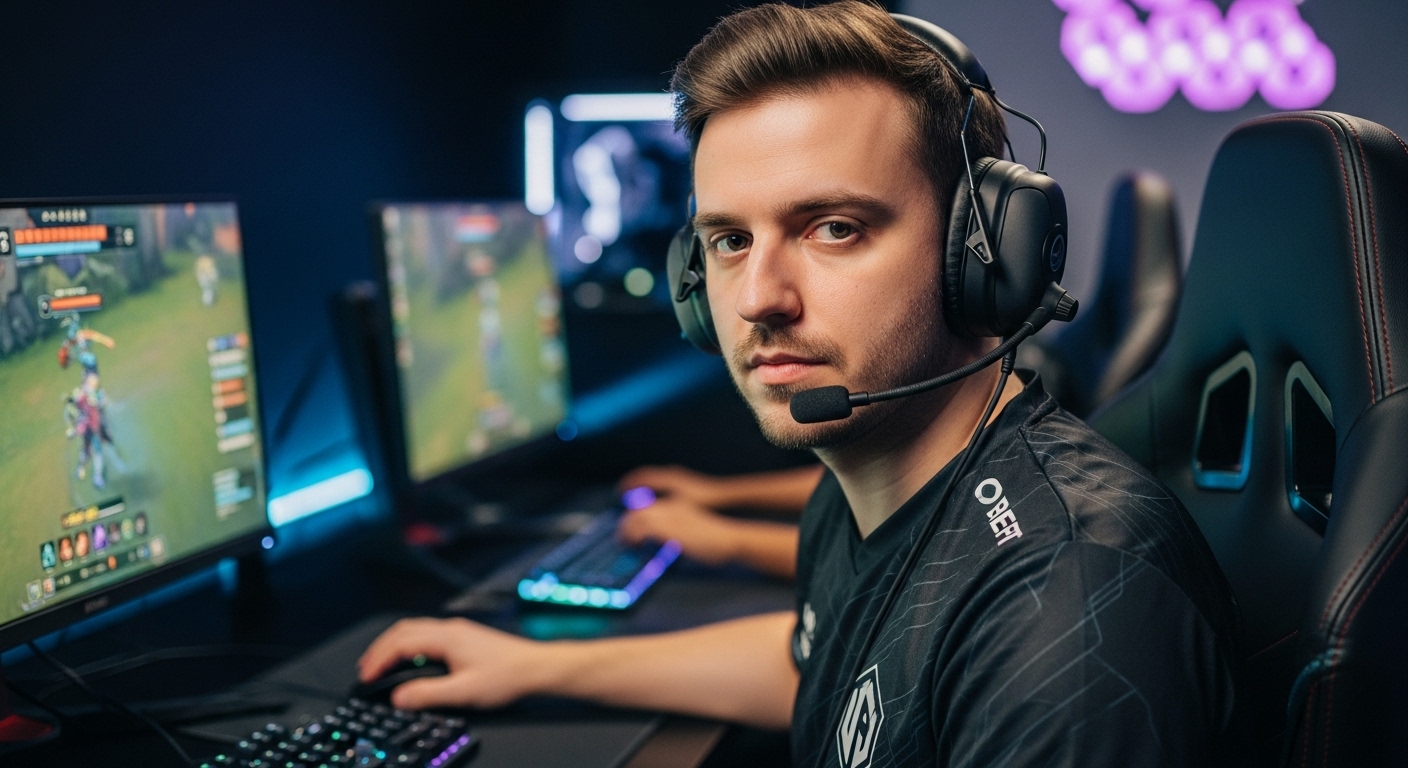
John | Your source for Esports, Battle Royale, Role-Playing, Retro Games, and Gaming Gear. Let’s Enjoy!

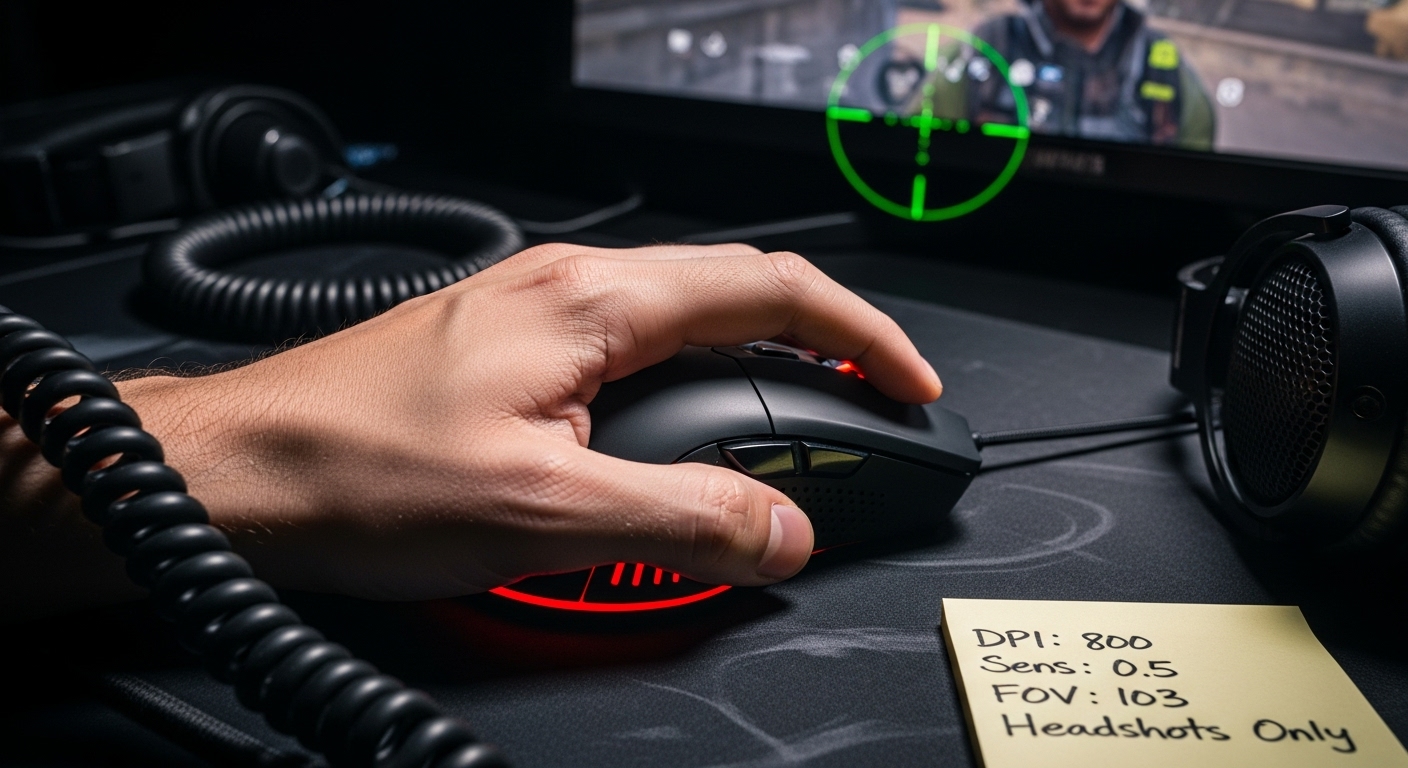

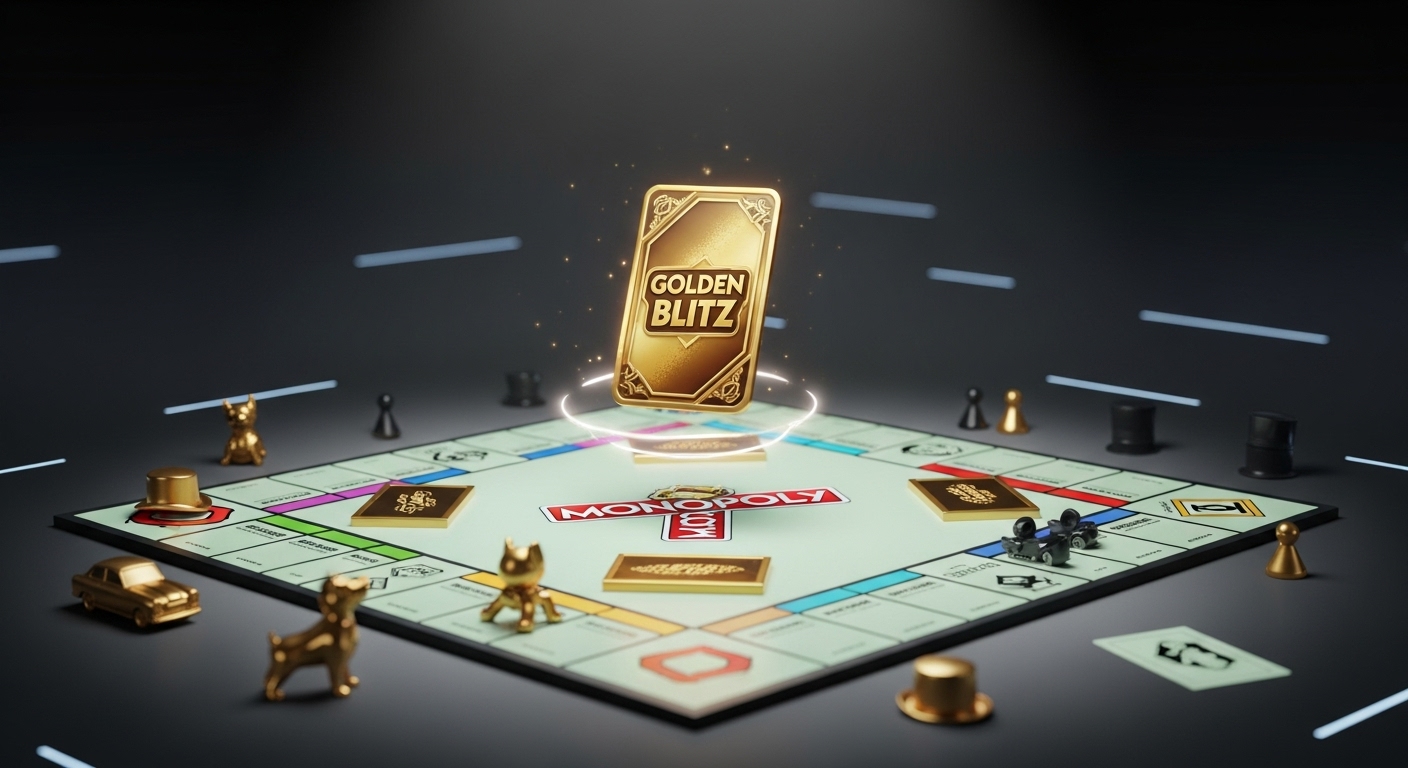
Great tips on improving FPS aim! Gear, settings, and mindset are key. Consistency is key. Thanks for sharing your knowledge.
No magic button, but lots of small tweaks help aim improvement. Consistency takes practice and focus.
Great advice! Consistency is key in aim improvement, along with proper gear and settings. No magic button indeed.
Great article with practical tips! Improving aim requires the perfect balance of gear, settings, and brain-hand coordination.
Gear, settings, and habit tips – the ultimate guide to improve FPS aim. No excuses for missing those headshots now!
Great advice! Consistency in aim takes practice and the right gear. Thanks for the tips.
Best aiming advice! Useful breakdown of gear, settings, and daily routines for improved FPS aim. Very insightful and practical.
Great tips for improving FPS aim! Consistency is key. Utilize gear and settings wisely. Aim expertly with practice!
How do you prevent gear from sabotaging your aim habits in FPS games?